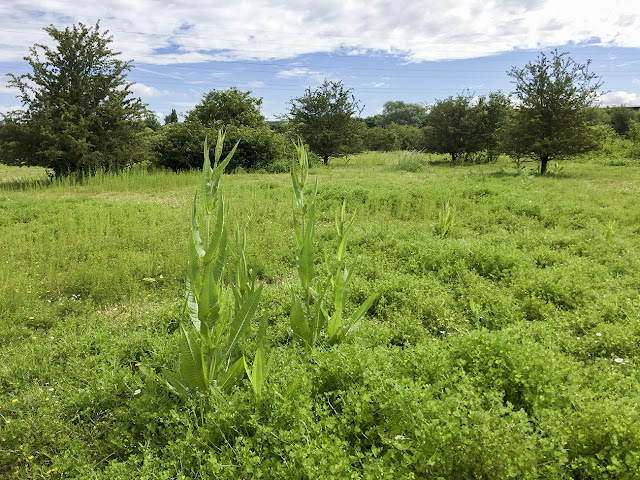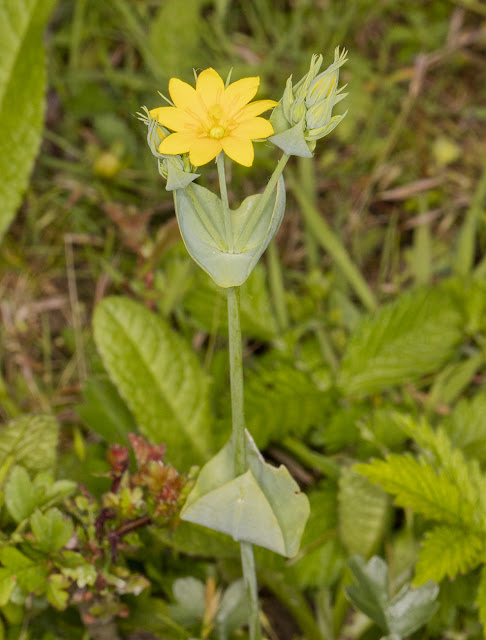 |
| Grassland at Leybourne Lakes, 16 June 2016. |
I have posted pics from Leybourne Lakes a few times. It's a varied and very pleasing environment. Although it's often busy near the car park, it is much less so once you get around to the other side of the lakes - which are not all that large, really; I can walk around them in an hour.
The top photo shows a low flat area next to the lakes. It is mostly typical grassland, that is, some grass and a great many wildflowers. The tall plants in this shot are Wild Teasels.
 |
| Creeping Cinquefoil, Potentilla reptans. Leybourne Lakes, 16 June 2016. |
Just past that scene is this carpet of yellow Creeping Cinquefoil. There are also splashes of purple Selfheal and bright red Scarlet Pimpernel.
It's not all lovely, though. I found a dead rabbit that had been scavenged by birds. I won't show the photo!
 |
| Yellow-wort, Blackstonia perfoliata. Leybourne Lakes, 16 June 2016. |
I usually find this bright yellow flower on the chalk. It's unusual in the way the stems appear to grow right through the middle of the leaves.
 |
| Horseradish, Armoracia rusticana, in flower. Leybourne Lakes, 16 June 2016. |
This is uncommon. I have seen Horseradish on this site before, but not in flower. It doesn't usually flower in this climate and instead has just a display of broad, dark green leaves. If you chew them, they bite back.
 |
| Water Figwort, Scrophularia auriculata. Leybourne Lakes, 16 June 2016. |
Water Figwort likes damp soil and often grows actually in the water's edge, like this. Ditches suit it, too.
 |
| Car park with European Rabbit, Oryctolagus cuniculus. Leybourne Lakes, 16 June 2016. |
I arrived while the car park was mostly empty and there were several rabbits mooching around. I couldn't get close, though. They moved away if I tried.
 |
| Field Madder, Sherardia arvensis. Leybourne Lakes, 16 June 2016. |
There are wildflowers even in the grass of the car park - this Field Madder was one. The flowers look white from a distance, but are actually a light mauve.
I have read that the word "mauve" was invented for the first ever aniline dye, which was produced in the mid-19th century. But that is not correct. It was indeed the name applied to that dye, but the word comes from the French for Mallow, and originally meant a much more saturated purple than this light shade.







No comments:
Post a Comment